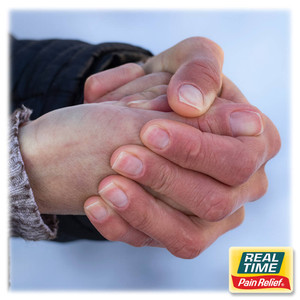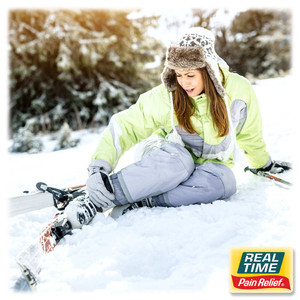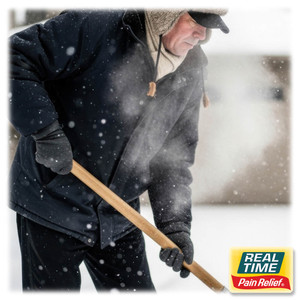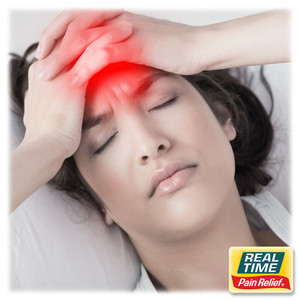Preventing and Relieving Common Summer Injuries
Posted by Dennis R Escalera on 22nd Jun 2025
Introduction
Summer is prime time for outdoor fun—hiking, swimming, sports, and backyard activities. But increased activity levels, heat, and environmental exposure can raise the risk of common injuries such as sprains, strains, bruises, and overuse conditions. Whether you're jogging on a sun-baked trail or lifting heavy pool gear, your muscles and joints are working harder than usual.
This article explores some of the most frequent summer injuries and explains how topical creams and lotions made with nature’s ingredients may offer effective, soothing relief—keeping you active and pain-free all season long.
Common Summer Injuries
1. Ankle Sprains
An ankle sprain occurs when ligaments are overstretched or torn, usually from stepping awkwardly or landing wrong on uneven terrain.
- Symptoms: Swelling, bruising, pain, and difficulty walking.
- Causes: Hiking on rocky paths, sports injuries, jumping or tripping.
According to the American College of Foot and Ankle Surgeons, ankle sprains are one of the most common orthopedic injuries in both athletes and non-athletes.
Source: https://www.acfas.org/slr-may-2020-lindsey-hjelm
2. Knee and Elbow Strains
Overuse or improper movement can strain muscles and tendons around the knees or elbows. Summer sports like volleyball, baseball, and tennis increase the risk.
- Symptoms: Sharp or aching pain, swelling, limited range of motion.
- Examples: Jumper’s knee, tennis elbow, and golfer’s elbow.
3. Lower Back Injuries
Outdoor chores like gardening, moving furniture, or recreational lifting can strain the lumbar region.
- Common Signs: Tightness, spasms, dull pain, or nerve irritation.
- Risk Factors: Dehydration, lack of warm-up, poor lifting form.
4. Shoulder Injuries
From swimming laps to playing catch, repetitive upper body movements can cause irritation or inflammation in the shoulder joint.
- Common Conditions: Rotator cuff strains, tendinitis, or bursitis.
- Warning: Sharp pain when raising the arm or reaching behind the back.
Topical Relief: Nature’s Ingredients That Work
Topical pain relief products made with nature’s ingredients are a valuable option for treating minor summer injuries. They offer localized, non-invasive relief with fewer systemic side effects than oral pain medications.
1. Arnica Montana
A homeopathic remedy made from a flowering plant, arnica is commonly used to reduce bruising, muscle soreness, and joint pain.
- Mechanism: Anti-inflammatory and circulation-boosting properties.
- Clinical Evidence: Studies show arnica may be as effective as NSAIDs for reducing pain and swelling after physical trauma.
https://pubmed.ncbi.nlm.nih.gov/37598770/
2. Capsaicin
Derived from chili peppers, capsaicin relieves pain by depleting substance P, a neurotransmitter involved in transmitting pain signals.
- Best For: Muscle pain, backaches, and overuse injuries.
- Usage Tip: Start with small amounts, as it produces a warming effect.
https://pmc.ncbi.nlm.nih.gov/articles/PMC7969397/
3. Menthol
Menthol produces a cooling sensation that may help distract the brain from pain, making it a trusted option in topical pain relief.
- Uses: Ideal for sore joints and strained muscles.
- Benefits: Activates thermoreceptors and improves circulation.
https://pubmed.ncbi.nlm.nih.gov/36277488/
4. Camphor
A counterirritant and mild analgesic, camphor is extracted from the wood of the camphor tree and is used for muscle and joint discomfort.
- How It Works: Stimulates nerve endings to reduce pain and itching.
- Note: Always use in diluted form; it’s potent and fast-acting.
https://pubmed.ncbi.nlm.nih.gov/37546095/
5. Eucalyptus Oil
This essential oil contains eucalyptol, a compound that offers both anti-inflammatory and analgesic properties.
- Great For: Muscle tension, joint pain, and stiffness.
- Added Benefit: Provides a fresh scent that complements menthol.
https://www.ncbi.nlm.nih.gov/pmc/articles/PMC2374764/
https://pmc.ncbi.nlm.nih.gov/articles/PMC11614573/
Application Tips
- Apply as early as possible after an injury to help reduce swelling and discomfort.
- Massage gently to increase blood flow and help ingredients absorb.
- Reapply as needed, typically every 4 to 6 hours unless otherwise directed.
- Avoid broken skin or open wounds, especially with warming ingredients like capsaicin or camphor.
Prevention Tips for Common Summer Injuries
- Warm-Up and Stretch: Prepares your muscles for activity and reduces stiffness.
- Hydrate Regularly: Dehydration can cause muscle cramps and slower recovery.
- Wear Proper Footwear: Good support can prevent ankle sprains and knee strain.
- Use Protective Gear: Elbow pads, knee braces, or ankle wraps add protection.
- Listen to Your Body: Stop activity if you feel sudden or sharp pain.
Why Choose Topical Relief?
Topical products are often preferred for summer injuries because they:
- Avoid internal side effects (like stomach upset from NSAIDs).
- Target pain directly at the source.
- Can be reapplied multiple times a day without systemic buildup.
- Are often non-greasy and fast-absorbing, ideal for hot weather.
When made with nature’s ingredients, these products offer a safe, effective alternative for people who want relief without synthetic chemicals or medications.
Conclusion
Whether you're hiking mountain trails or playing frisbee in the park, injuries happen. By preparing ahead and using topical pain relief solutions made with nature’s ingredients, you may prevent minor issues from turning into major setbacks. With ingredients like arnica, capsaicin, menthol, and eucalyptus, nature provides powerful tools for fast, effective recovery.
Don’t let pain keep you indoors this summer—stay active, stay protected, and let nature help you heal.





